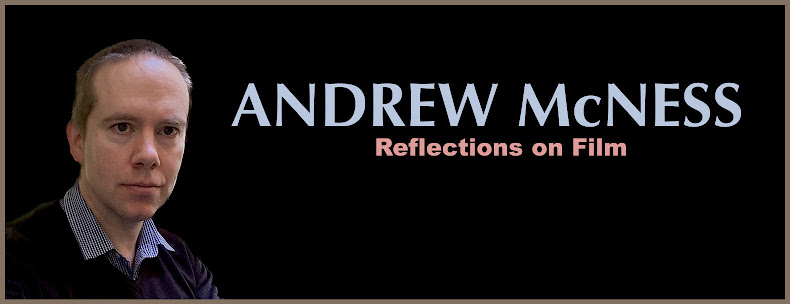Its ending is superbly enigmatic and Carpenter et al.'s score is a
thing of dark beauty, but it would seem to me this 'forty year later'
direct sequel can only fire on all
cylinders when watched back-to-back with the 1978 original. I'm not talking
about its inspired switcheroos with iconic imagery: you don't need the original
firmly in mind to appreciate those. With the 1978 original still pulsing away
in the synapses, however, you immediately
recognise how Laurie Strode (Jamie Lee Curtis) has become the gun-toting
obsessive that Dr. Sam Loomis (Donald Pleasence) was, circa 1978...rather than
getting caught up in the question of whether Laurie's psychology is a
semi-realistic presentation of long-term trauma.
Watched back-to-back, a strong thematic thread - that the touch of Evil forces a
dramatically heightened, even comically heightened, response from the innocents
it touches - becomes a clear and defining characteristic of the Halloween universe. Given
our knowledge of Laurie's former delicacy, and how her encounter has now
transformed her, the Loomis character is also retroactively deepened and
dimensionalised. We, after all, never knew a pre-Michael Loomis.
The psychology of 2018's Dr. Sartain (Haluk Bilginer) is another
response to Michael's pure, unadulterated Evil. Evil casts its soul-sickening
spells as much as it does create its traumas. (Laurie's observation that
Sartain, Loomis' successor at Smiths Grove Sanitarium, is "the new
Loomis" is at once a red herring and evidence of Laurie's lack of
self-awareness.) But I feel you really need Loomis' multiple ruminations and
proclamations on Evil still resonating away to carry such ideas with weight, to
feel more than a sequel's jab for some unique elements. (Loomis' timeless
bluster is contained to one scene in the new film.)
Of course, I am cancelling out my niggles as I explain them as, in
all probability, once Halloween (2018)
reaches the home entertainment stratosphere, the film will be regularly sampled
alongside the 1978 film. And thus, we grant ourselves the 'Halloween wormhole'
to enjoy, where the forty-year distance between two events is but a day.
In general, that is. Watching the films back to back also shows up a thing or two. Style being the big one.
Given that the new film largely cuts away decades of additional stylistic
tropes (and storylines) established over nine ‘interim’ instalments, one could
hold it to dutifully
uphold basic appeals of the original. But Halloween (2018)
is edited to a modern beat: within the film's first reel you become aware of
how the economic imperatives of today preclude it from reaching anything near
the slow but steady 'contamination of middle-class neighbourhoods' vibe of the
original. It's a sequel, and an identical level of atmosphere-setting is neither
necessary, nor wise. Still, this slow-burn quality was an integral and, it
would seem, enduringly under-recognised part of what made the original so
effective (and something the 1981 sequel, continuing the night of the original
massacre, aped in its multiple perspectives on a darkened hospital interior); such things feel a little too neglected here. So much so that a
masterfully executed extended shot of Michael stalking and slashing, feels, in
the wider context of the film's style, less organic and more 'greatest
hits' dutiful.
The scene is still a show-stopper and it does reassert Michael's
'ability' to infiltrate and dislocate community trust and cohesion. Best of
all, the new film engages with the question it creates: why Michael - shorn of
his body count of ‘interim’ sequels - would still cast such a powerful spell
over survivors, researchers, psychiatrists and - no doubt - many more? As a
teenage character points out, Michael's 1978 killing spree is hardly an
extensive one. But you can see why people become obsessed with Michael. They
sense his energy (or is it his energy wallops them?) and they sense his
awareness. The body count is immaterial: people know this blank slate is the
real, unstoppable deal. He does not speak and cannot be provoked to do so.
"Say something!" is the catch-cry of those who seek some reason or
explanation in Michael. "Do as I say!" is the counter cry of those
who know not to mess with a primal force and instead seek to protect those in
his path.
Taken on its own terms, Halloween (2018)
felt an earnest (fairy)tale about inter-generational trauma, with a great
score, and a way too over-the-top patriarchal abuser. Watched within hours of
the original, though, the perspective is quite different. You can enjoy each jigsaw
piece falling into place, seeing how the impact of Evil is cyclical and
traverses time. It's a great pairing.
There is another jolly good reason to watch H18 in such close proximity to H78.
You avoid the moment I had: wondering, however momentarily, how Laurie had been
travelling since her death in 2002.
Published 9 November 2018

